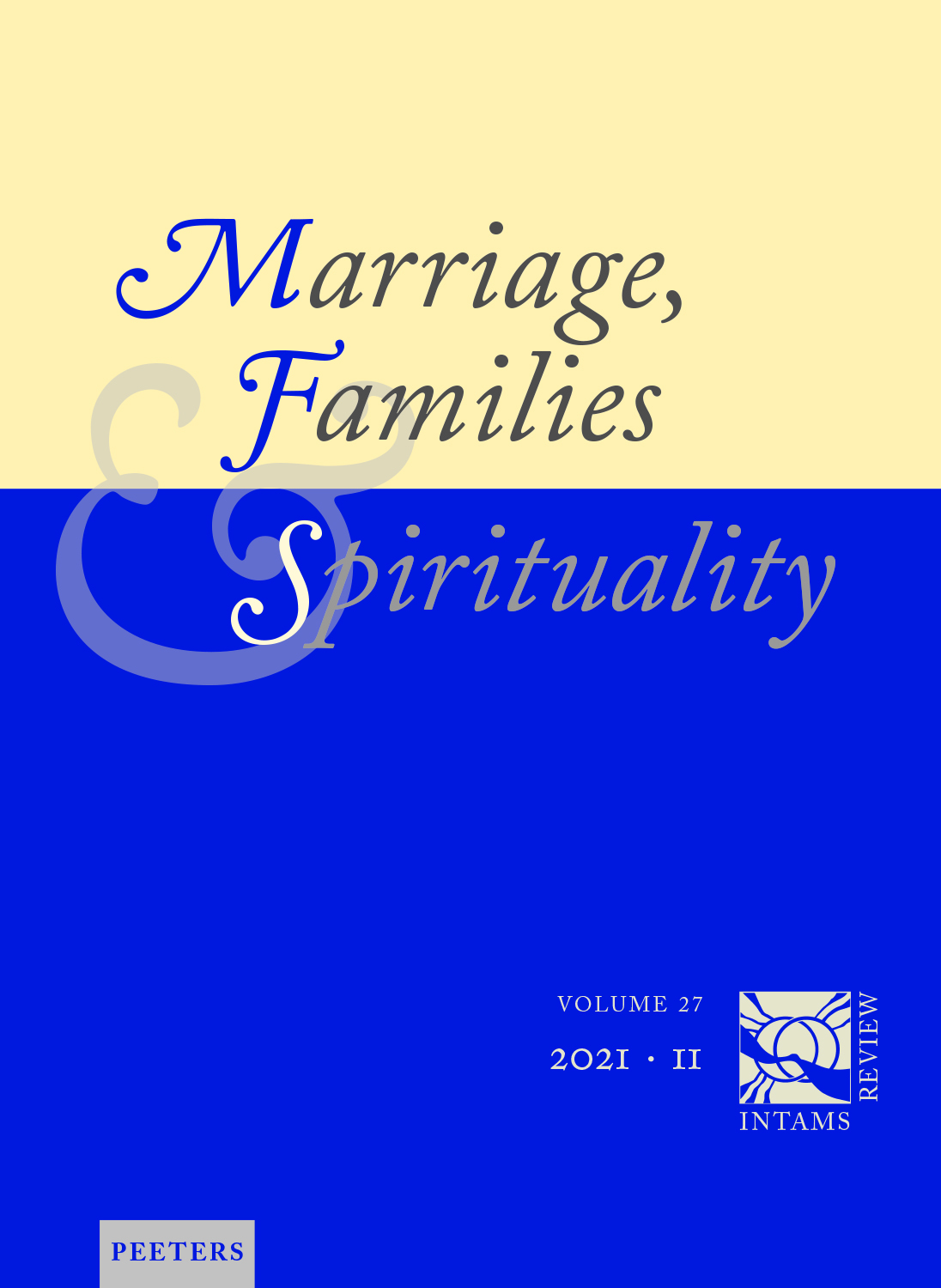 previous article in this issue previous article in this issue | next article in this issue  |

Preview first page |
Document Details : Title: Living in Love and Faith Author(s): THATCHER, Adrian Journal: Marriage, Families & Spirituality Volume: 27 Issue: 1 Date: 2021 Pages: 36-48 DOI: 10.2143/INT.27.1.3289473 Abstract : The article analyses and responds to the Church of England’s recent publication on relationships and marriage, Living in Love and Faith. This important project is a result of an interdisciplinary team of experts and consists of a book and an online hub containing videos, podcasts, films, and a library of other resources. The article begins by sketching the background of the endeavour. The author shows that the Church of England’s discussions concerning developments in sexual practices have been underway since the mid-20th century. The alienation from the church occasioned by its restrictive attitudes spurred it engage in spirited discussions challenging the traditional stance. Some of the significant moments are highlighted. The church held to a restrictive stance over the decades, but a new openness to dialogue emerged in 2013, when the bishops set up a series of conversations at the national and local levels on sexuality. The tumultuous reception of these conversations led to the production of the current project. The second section gives a description of the contents of the book. It sets out its five parts and describes the eighteen different chapters. The first part gives the theological context, part two relates the perspectives of the human sciences, with statistics on the current state of marriage as well as global perspectives. Part three analyses the fractured debate on sexuality in Christian contexts. The final two parts discuss discerning the word of God on these contentious issues and the dialogue between church and society. The final part of the article turns to an evaluation of the book. The author finds many positive points, in the way it is presented, in the breadth of its scope, and its realistic presentation and consideration of the issues. He finds deficiencies, though, in its approach to the Bible, its account of marriage, and its treatment of gender and history. The Bible is approached solely through a conservative and evangelical lens. There is a naïve lack of attention to biblical studies that produces a romantic reading of biblical ideas about marriage. In its account of marriage, this same romantic vision predominates, presuming that the biblical idea of marriage is comprehensive and monolithic, and the Anglican tradition of thought on marriage is given little consideration. The treatment of gender and history is even more problematic. While it does set forth different meanings for gender, the book does not examine gender’s impact on the central topic, the relations between women and men. It takes no notice of the problematic history of gender attitudes in the church. There is, in fact, little attention to historical changes in sexual attitudes at all in the text. The article then looks at the problematic connections between sexual attitudes and sexual abuse and notes that this book does not address the sexual abuse report produced at the same time. The conclusion states that it is the responsibility of the bishops to now respond the positions raised by this project and notes the opportunity to open new doors in the Church of England’s stance on sexuality. Unfortunately, recent history has shown little hope that such a thing will occur, yet there is always the opportunity for change. |
|


